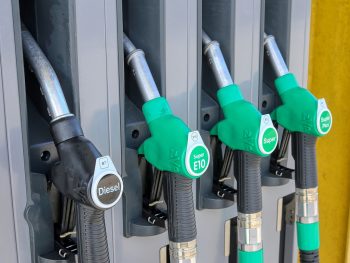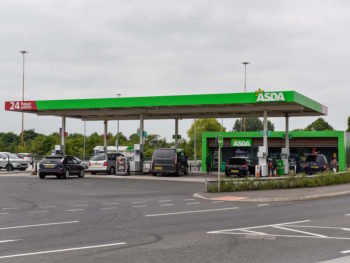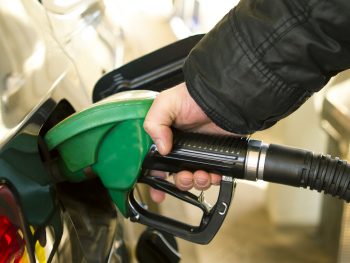UK fuel prices remain cause for concern, says competition watchdog
The UK’s competition watchdog has warned of continued concerns for fuel prices – including fuel retailers’ profit margins – despite action taken this summer.

The CMA says “competition is still not working well in this market to hold down pump prices”
The Competition and Markets Authority (CMA) has published its first monitoring report since its in-depth study earlier this year, which it says shows that prices at the pump have gone up although the wider data gathered on margins and spreads reveals a mixed picture.
Its in-depth study into the road fuel market published in July 2023 found a weakening of competition in retail since 2019 and called for major changes, including establishing a monitoring body to report on the state of the road fuel market.
The new report is the first quarterly update since then and looked at fuel prices at the pump for drivers from the end of May 2023 to the end of October 2023.
The report found that pump prices for both petrol and diesel have increased 11.1 pence per litre (ppl) for petrol and 13.9ppl for diesel since May 2023. For petrol, prices have increased from 142.9ppl at the end of May 2023 to 154.0ppl at the end of October 2023. For diesel, pump prices at the end of May stood at 147.9ppl and had increased to 161.8ppl by the end of October.
The CMA says this can be divided into two separate periods. During June, July and August, this appears to have been driven by global factors such as increased crude oil prices. Wholesale prices then reduced in September and October – but as the RAC has repeatedly pointed out, retail prices did not.
While the RAC has said pricing data categorically shows supermarkets, as with all fuel retailers, are benefiting from lower wholesale costs but aren’t passing these on, the CMA has said it’s “too early to draw definitive conclusions”.
However, the regulator says it could indicate a lack of “competitive response” from fuel retailers if this trend continues – and warns that it will monitor these developments.
Supermarket fuel margins fall over summer but still high

The CMA warned that August fuel margins at supermarkets remained higher than those for any year prior to 2021
The CMA also looked at the fuel margins of supermarkets – the difference between what a supermarket pays for its fuel and what it sells at – from the start of 2023 up to August 2023.
Its road fuel study published this summer found increased supermarket fuel margins led to drivers paying an extra 6 pence per litre in 2022 – and the new report indicates some concerns still.
The data shows that the fuel margins of supermarkets reduced over the period June – August. Margin data is not yet available for September and October and relies on voluntary information sharing by the retailers.
In the period from May to August, average fuel margins fell around 4.5ppl (from an average of 11.9ppl in May compared to 7.3ppl in August).
But it warned that August margins remain higher than those for any year prior to 2021.
The CMA also looked at the retail spread – the average price that drivers pay at the pump compared to the benchmarked price that retailers buy fuel at – from the end of May 2023 to the end of October 2023. This shows “significant increases in retail spread for both petrol and diesel” during September and October. For both fuels, the retail spread at the end of October was significantly higher than the long-term average of 5-10ppl.
And while retail spread does go up and down in response to volatility in wholesale prices, long-term trends should show pump prices tracking wholesale prices if retail competition is effective.
Sarah Cardell, chief executive of the CMA, said the general finding was that “competition is still not working well in this market to hold down pump prices” – and warned that the CMA will monitor and report further on this in its next update.
“As our year-long, in-depth study showed, this is a market where competition is not working as well as it should. But while today’s first monitoring report is an important step, it is based on voluntary information and is missing some major fuel retailers. That’s why it is so important that a permanent fuel monitor – with powers to demand information from all retailers – is put in place to give a fuller picture of how the market is working.
The UK government has committed to legislating for a mandatory, real-time pricing data scheme and will consult on it later this year.
In the meantime, the temporary pricing data scheme set up by the CMA now has 12 retailers participating, representing approximately 40% of UK forecourts and more than 60% of fuel sold.
Fuel pricing situation ‘currently worse than ever’

The RAC says forecourt prices are falling like the proverbial feather despite the wholesale fuel market being down significantly
RAC fuel spokesperson Simon Williams said: “It’s very disappointing that the CMA has found that major fuel retailers are still taking far bigger margins than they have done in the past, something we have been saying for a long time, as this means drivers are still being taken advantage of at the pumps. While supermarket margins may have fallen in the summer, our latest data shows they have more than made up for this since then and are currently taking very large margins.”
Williams also warned that while major fuel retailers are now voluntarily publishing their prices daily for app-makers to use, this has “had no effect whatsoever in improving competition and lowering prices”.
He added: “We believe the situation is currently worse than ever as the wholesale fuel market is down significantly, yet forecourt prices are falling like the proverbial feather.
“It’s blatantly clear to us that a price monitoring body – as recommended by the CMA – is desperately needed as major retailers cannot be trusted to price fuel fairly for their customers. But unless this body has the power to take action against major retailers that don’t lower prices quickly enough in a falling wholesale market, we fear little will change even then.”












